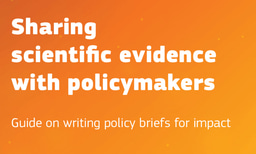Why do we need open science?

In November 2021, UNESCO released an open science recommendation, which sparked extensive international attention and research. Open science has become an international trend, and China is actively participating in this movement. On November 19, 2024, President Xi Jinping of the People’s Republic of China announced at the 19th summit of the Group of Twenty (G20) leaders that China supports the eight actions for global development, with the fifth action being the joint initiative for “International Cooperation in Open Science” launched together with Brazil, South Africa, and the African Union, aiming to bring the fruits of global technological innovation more to the “Global South.” The revised Science and Technology Progress Law of the People’s Republic of China released in 2021 also advocated for “…promoting the development of open science…”.
Why do we need open science? In my view, it is primarily considered for the following reasons. Firstly, open science can enhance the impact of research. For authors, open science increases the exposure and citations of their papers. Studies have shown that open access (OA) papers receive more citations, with articles in OA repositories being cited 50% more frequently than those in toll-access repositories; articles linked to repository data have a citation rate 25% higher than those that do not share data or only share data in supplementary information files. Secondly, open science broadens the scope of dissemination, reduces access barriers, and facilitates the spread and application of knowledge. Research has demonstrated that OA promotes the transfer of knowledge across different fields. Thirdly, open science increases the transparency of research, fostering scientific integrity and, through the sharing of data, methods, tools, and outcomes, avoids redundant labor and reduces resource wastage in the global scientific research sector. Fourthly, from an AI4S (Artificial Intelligence for Science) perspective, open science provides a continuous influx of 'fuel' for the development of global AIGC (Artificial Intelligence Generated Content). Lastly, open science accelerates the pace of technological innovation, promotes the transformation of scientific and technological achievements, and drives socioeconomic development.
In the era of open science and digitisation, the types of scientific output have become increasingly diverse, including pre-registration and registered reports, preprints and preprint peer reviews, research data, research software and code, data papers, software papers, and so on. The academic contributions of these new outputs are gradually being recognised. Traditional academic papers are also expanding in version, encompassing author manuscripts, preprints, post prints, author accepted manuscript, online early access versions, version of records, and more. As these outputs diversify, they also become more fragment or granular. For example, on the OCTOPUS platform, publication types are broken down into 8 sections: research problem, rationale/hypothesis, method, results, analysis, interpretation, real world application, and peer review. Some of these types of scientific output may not have emerged solely due to open science, but open science has brought these previously unseen or unrecognised forms to light, causing them to rise from the depths of the 'iceberg'. On one hand, these new, fragmented forms of scientific output have spurred the creation of new publication platforms, i.e., open science infrastructures, such as institutional repositories. On the other hand, open science has fostered the integration of science and society, forming new methods of cooperation/collaboration, evaluation metrics, etc., like altmetrics.
For libraries or information (resource) management and service institutions, the diversity of information resources under the perspective of open science is even more pronounced. Firstly, as mentioned earlier, the types of information resources are diverse, specifically including datasets, software and code, hardware, preprints, open education resources, peer reviews, experimental methods and procedures, etc. Secondly, even the single type of resource—data—exhibits diversity. This is manifested in 1) the varying forms of datasets used or generated in different disciplines; and 2) the multi-dimensional diversity of research data, including datasets or data entities, data descriptive papers, and their metadata, which further increase its complexity. Thirdly, the infrastructure of open science is diverse in terms of type, origin, distribution, and operational entities. Fourthly, the actors in open science practices are widely distributed and varied. UNESCO’s Open Science Recommendation points out that open science actors include researchers, scientists, and scholars, librarians, users and the general public, computer scientists, software developers, coders, publishers, editors, etc. The roles and participants in the lifecycle of information resources, from production, collection, processing to organisation, management, and storage, are equally numerous, such as data producers, sharers, managers, and discoverers; for code, there are developers, contributors, and sharers.
The pre-publication, mid-publication, and post-publication processes of information resources further enhance their diversity. Taking data as an example, the process from laboratory to analysis and organisation, then to integration/consolidation, publication, and storage, shapes the form, format, and type of data, including the generation of derivative data. The same applies to papers. Processes such as data visualisation and reuse also increase diversity and generate more data, including user behaviour data when accessing information resources.
The above new types of scientific output and academic communication practices, as well as the diversity of information resources, present challenges and concerns for information resource management institutions and managers. Therefore, based on the continuous emergence of various scientific outputs under the context of open science, I have focused on the management of scientific outputs in the realm of open science, innovatively proposing the concepts of data diversity and software level metrics, and exploring the key issues in current global open-access policies and practices, the new requirements UNESCO’s Open Science Recommendation imposes on scientific journals, and the influences of diversified academic outputs and new academic communication reform methods on library information resource construction and management. These works provide theoretical support and strategic suggestions for effective governance of scientific outputs, the practice of open science, and the new information services of library and information institutions.
The specific studies published (including those accepted) are as follows (all as the first author):
- "Processes and Rights of Practicing Open Science". Journal of Xihua University (Philosophy & Social Sciences), accepted. This paper introduces an open science practice case experienced by researchers themselves, and analyses the overall processes of open science practice case and the problems encountered, such as intellectual property concerns.
- “Preprint Review and Refereed Preprints: Current Situation, Impact, and Library Countermeasures”. Library and Information Service, accepted. This paper discusses the rise of preprint peer reviews and their impact on academic communication and libraries, providing strategic suggestions for preprint management, preprint reviews, and post-review preprint governance, as well as the new service of preprint peer reviews in libraries.
- “Data Diversity: Emergence, Concept and Application”. Published in Documentation, Information & Knowledge in 2022. This paper introduces the concept of data diversity, including its manifestations in open science and various industries, and the requirements it imposes on data management, offering theoretical support for more effective data management and governance. The full text has been reprinted by the People’s University of China’s Reprint Series. It has been cited 17 times.
- “Software Level Metrics: Concepts and Future Applications”. Published in Journal of Library Science in China in 2022. This paper proposes the concept of software-level metrics to recognise the contributions of software, code, and open developers in the context of open science, providing theoretical support for the long-term preservation of academic software and the provision of new knowledge services in libraries, thereby enriching and broadening the theory of scientometrics. It has been cited 4 times.
- “Open science and suggestions on scientific journals”. Published in Chinese Journal of Scientific and Technical Periodicals in 2022. This paper highlights the higher demands open science places on journal publishing compared to open access, offering strategic suggestions for Chinese scientific journals to adapt to this new trend. It has been cited 17 times.
- “Analysis of Key Issues in Open Access Policy and Implementation”. Published in Library Theory and Practice in 2022. This paper analyses the key issues emerging in global open access policies and practices, providing strategic advice for the subsequent positive practice and development of open access. It has been cited 15 times.
Open science cannot be realised without practice. Therefore, I have also actively taken charge of the construction and operation of the institutional repository, open access publishing supporting, and performing open science information literacy. As one of the main participants, I am also responsible for the construction and operation of the ChinaXiv-Pharmaceutical Science, which is a national preprint server in China. Through these practices, deeper issues in the current practices of open science and open access have been identified, such as institutional repositories becoming mere storage repositories, the presence of predatory journals, the diversity of research outputs, and the crisis of trust in preprints. The summation of these phenomena and contemplation of these issues have engendered new research.
In the future, I will continue to track and explore the new developments, changes, and trends in information resource management in the age of open science, striving to drive continuous innovation in the library sector. Finally, I express my gratitude to Dr. Liu Xiwen, Dr. Gu Liping, Ms. Liu Jingyu and other teachers from National Science Library, Chinese Academy of Sciences for their assistance, guidance, and support. I also thank my colleagues of Shanghai Institute of Materia Medica, Chinese Academy of Sciences, for their support and assistance in the construction and promotion of ChinaXiv-Pharmaceutical Science.
Photo by Patrick Tomasso on Unsplash.




Join the FEBS Network today
Joining the FEBS Network’s molecular life sciences community enables you to access special content on the site, present your profile, 'follow' contributors, 'comment' on and 'like' content, post your own content, and set up a tailored email digest for updates.